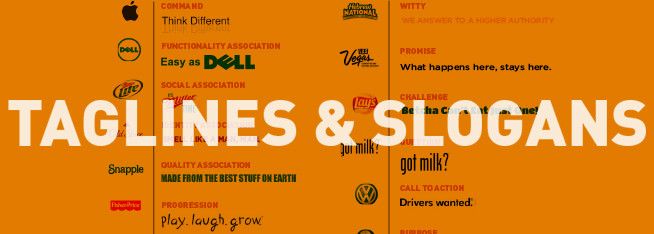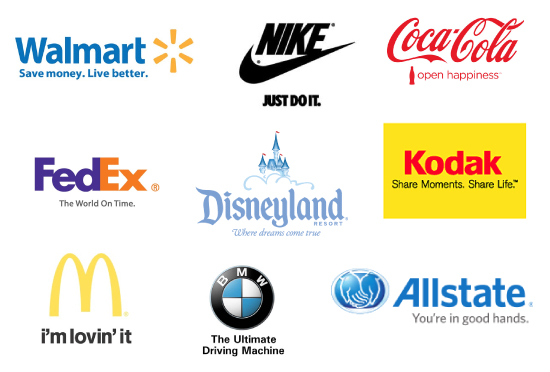
Tagline vs Slogan: How Are They Different, And Which One Works Best?
Some product adverts would not leave our heads. Those that pop into your thoughts during your most productive hour won’t disappear until you visit the product website. We remember them because they are catchy. And to be catchy, you need a tagline, slogan, or both. However, there are differences tagline vs slogan.
Imagine slapping your tagline or slogan into an ad design created with one of the best procreate brushes online. The result is enough to launch your marketing high.
But the problem is that brand owners need help determining if their slogans are more effective than the tagline. So if you’re unsure about using a tagline or slogan, this article is for you.
What Is A Tagline, And How Does It Work?
Remember those catchy phrases you see on billboards or when viewing an Instagram ad? Some give compelling reasons to buy a product or subscribe to the company’s ideas. That is a tagline.
Taglines are generally short descriptions of the company’s mission. This catchy phrase describes the brand’s purpose and gives the reader enough insight into what to expect.
Using a tagline is similar to describing the company’s culture and the fundamentals of why they produce certain products or offer specific services.
Taglines capture the readers’ attention and connect them with the brand’s values. Brands often employ a tagline as the focus of their marketing campaign because it is the brand’s key idea and guides how the public perceives them.
Here are some famous taglines we have all read over the years:
- Nike: Just Do It
- De Beers: A Diamond is Forever
- Uber: Move the way you want
- Air BnB: Belong everywhere
- The US Marine Corp: Semper Fidelis
While taglines maintain the general characteristics of describing a company’s mission, several companies use them in different forms.
Here are some common ways to use your brand’s tagline:
Descriptive Tagline
It is the popular form of a tagline. It describes the brand and its benefits.
Walmart’s “Save Money, Live Better” is a perfect example of what customers would get from shopping at Walmarts.
Superlative Usage
Some brands use their taglines to point out their edge over the competition. The tagline declares the brand as the best option for their customers.
BMW has one of the best excellent taglines, “The Ultimate Driving Experience,”; leaving no question about customer satisfaction with their products.
Imperative
Taglines can also drive the reader to action. Some brands use instructive words that could inspire the reader beyond brand advertising and guide their lives.
Nike’s “Just Do It” works more than the regular brand strategy; it inspires commitment to craft despite doubt.
Interrogative
Questions are excellent marketing strategies as they push the audience to respond or look for answers. It also works with brand taglines.
Companies use these questioning taglines to demand specific actions from the reader.
Capital One’s query, “What’s in your wallet?” makes you wonder what you can do about the money in your wallet.
Visionary
Taglines generally address the brand’s reputation and prospects, but some focus on how the brand could affect the future.
Marriott Bonvoy’s “Rewards Reimagined” does not just describe hospitality but creates an image of the customer getting new rewards.
What Is A Slogan, And How Does It Work?
While it is similar to a tagline and can entice the target audience, a Slogan is a witty and short description of a brand or company’s benefits.
Most company slogans contain enticing phrases that describe what the customer would gain from the brand or their products.
The slogan is from a Scottish word that means Battle Cry, used to charge warriors into battle. Using it in marketing implies that it should be provocative enough to drive sales.
The basic requirements of catchy slogans include being memorable enough to recall, and it must convince prospective customers that the product or brand exceeds their expectations. 47% of customers believe a company’s slogan greatly influences their purchasing decision.
We have all read a brand slogan that sold us before seeing the product. We randomly recall the catchy slogan even when we are far from the brand or the tagline.
Most marketing campaigns rely on these short sentences to leave a lasting impression on their audience. We bet you are familiar with these slogans:
- Skittles: Taste the rainbow
- Lay’s: Betcha can’t eat one
- Zara: Love your curves
- Disneyland: Where Dreams Come True
- Ronseal: It does exactly what it says on the tin
Companies use their slogan in different contexts, trying to remain memorable by adopting these catchy phrases.
However, these contexts may vary depending on the company’s preference. Here are some popular ways you can use slogans:
Persuasion
Most marketing strategies are inherently persuasive, but slogans make overt attempts.
The most effective brand slogans try to convince the target audience that they are the ideal choice. Kit Kat’s “Have a break, have a Kit Kat” almost compels the reader to stop and eat some Kit Kat.
Emotive
Several brands now understand that they can move their customers to action when they provoke emotional responses.
Evoking a feeling of satisfaction is usually enough to make the customer want to experience the same.
Coca-Cola’s “Open Happiness” slogan is one of the most famous slogans because people can imagine happiness when they uncork a Coke bottle.
Descriptive
Most slogans describe what the customers would gain from the product; this is a common theme, even with other forms of slogans.
The words generally point out how the product or service would affect the target audience or why they should buy it.
Paul Masson’s “We will sell no wine before its time” describes the brand’s commitment to properly-aged wine, one of its most attractive features.
Business
Slogans can be as informative as a tagline. You may reveal your brand’s values and connect the customers with the company’s culture.
Rothy’s uses its “Reduce your Carbon Footprint in style” to reflect its commitment to environmental sustainability and stylish footwear. The Business slogan becomes a short, catchy pitch that captures the reader’s attention.
Creative
Making a slogan memorable requires excitement, perhaps a touch of humor that the audience will never forget.
While funny or alliterative slogans still count as unconventional, they are easily some of the most effective slogans.
Bounty’s “The Quicker Picker Upper” has a lasting impression because of the “er” rhymes.
4 Differences Between Tagline And Slogan
Taglines and slogans are similar in how they promote brands and companies. You can easily convert one into another and make it work if you are savvy enough.

The fundamental difference between a tagline and a slogan includes the creator’s intention and how they affect the brand.
Let’s take a look at the significant differences between a tagline and a slogan:
Flexibility
Slogans are generally more flexible than taglines as they are part of specific marketing campaigns instead of reflecting the brand identity.
Where companies can frequently change slogans as they adjust their advertising strategies, they use taglines to reflect their long-term commitment to specific values and service delivery.
Most companies have maintained the same tagline for decades while their product slogans change with every new campaign.
Purpose
While slogans promote the company and its products, taglines deal more with public relations.
Taglines explain the company’s mission, creating a short narrative that guides public opinion.
In contrast, slogans focus entirely on the products, helping with specific product publicity than explicitly mentioning the company’s culture.
Where the tagline implies a general trust in the company’s values, slogans always focus on specific products or services and their benefits.
Development
Developing taglines and slogans play a pivotal role in companies’ marketing strategies. Most companies form their tagline at the earliest point in their development or during rebranding.
However, companies frequently adopt slogans to fit their ad campaigns. The brand may create multiple slogans for every new product where the tagline remains part of the company’s identity until they rebrand.
Length
One similarity between taglines and slogans is their brevity. They must be short and direct to convey the company’s mission or the product’s benefits without losing their target audience.
However, slogans are typically longer than the tagline because they try to sell the brand instead of representing the company’s mission.
It is ideal for maintaining one sentence for your tagline and slogan since the length makes it easier for the reader to grasp and remember. After all, the goal is to remain memorable.
Which One Works Best?
The similarities between a tagline and a slogan bring the idea that one can replace the other, but that is not entirely true.
Catchy slogans play different roles from brand taglines depending on your marketing strategy. And while you don’t have to use both in every ad campaign, you might need them for different cases.
Since the tagline reflects the company’s mission, it is one of the essential tools for public relations. Your customers may need more time to read through your core values or workplace culture, but the tagline would tell them everything they should know.
Slogan becomes vital in your attempt to create publicity around your products or services. Digital marketing (and any other advertising medium) only gives room for a bit of text. Instead, you must pass a brief message, and only your slogan can convey it effectively.
Conclusion
Slogans and taglines will work when the represented brand is creative enough to craft a phrase that expresses the mission and product’s values. Apple and Nike did it, and so can you.
Now, the question is different from which one works best; instead, you should ask how you can make your slogan and tagline work for you.
When deciding on the best fit, ensure you outline your goals – managing public opinion and brand image or promoting your company and products. It will help you decide on the best marketing label to use.







